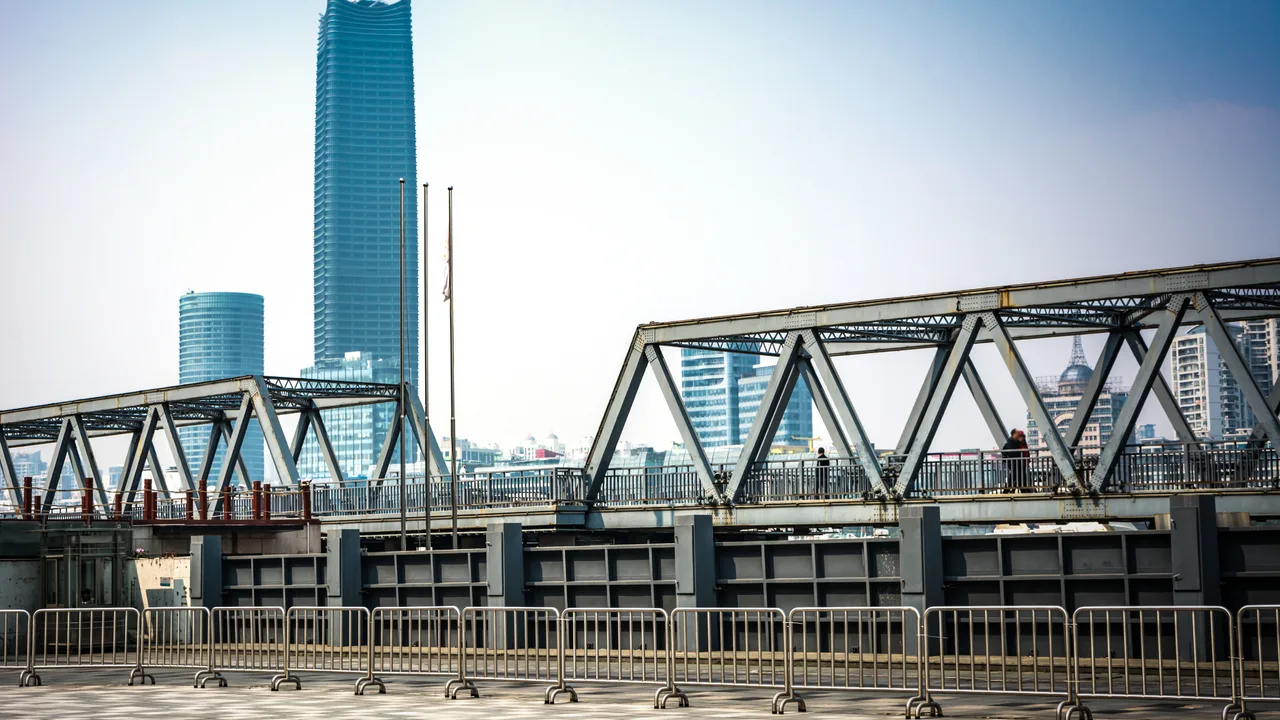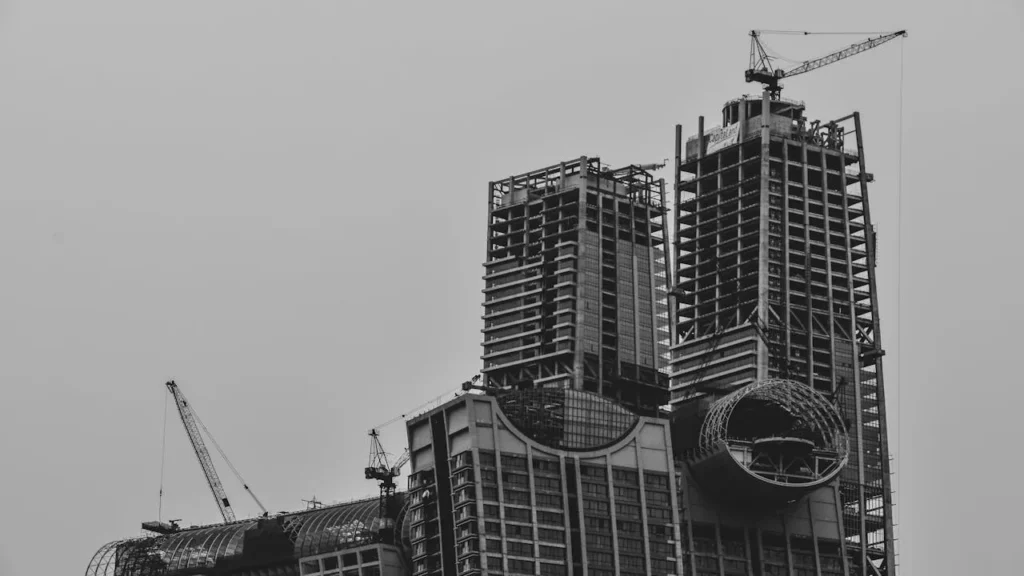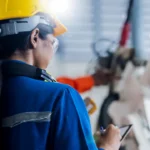The phrase steel structure China has become synonymous with innovation, precision, and global expansion in the modern construction industry. Over the past two decades, China has transformed from a domestic builder into one of the most influential exporters of prefabricated steel buildings and heavy structural components. With an extensive network of fabrication plants and a growing reputation among Chinese steel exporters, the country continues to redefine the global supply chain for industrial and commercial projects.
Understanding China’s Steel Structure Industry
China’s dominance in the steel structure market is built on a vast ecosystem that combines production efficiency, government support, and advanced technology. From research and design institutions to fabrication yards and export terminals, the entire chain of steel structure China operates seamlessly. This integration has allowed Chinese firms to deliver complex projects—from stadium roofs to oil platforms—on time and at competitive costs.
According to the World Steel Association, China accounts for more than half of the world’s total steel output. Its ability to mass-produce high-strength sections, corrosion-resistant coatings, and custom assemblies makes it a global hub for structural steel. The emphasis on large-scale manufacturing also drives down costs, giving Chinese producers a distinct edge in international tenders.
Core Strengths of Chinese Steel Exporters
- Economies of Scale: Industrial zones such as Hebei, Jiangsu, and Shandong host hundreds of specialized workshops capable of producing thousands of tons monthly.
- Technological Innovation: Automated welding, CNC plasma cutting, and 3D design integration enhance accuracy and consistency.
- Quality Assurance: Most Chinese steel exporters comply with ISO 9001, CE, and ASTM standards to meet the expectations of global clients.
- Cost Efficiency: Vertical integration—where design, fabrication, and logistics occur under one entity—reduces overhead and shortens project cycles.
Inside Modern Fabrication Plants

At the heart of steel structure China lies a network of advanced fabrication plants equipped with intelligent production lines. These facilities are typically divided into distinct zones—cutting, assembly, welding, blasting, painting, and packaging—allowing simultaneous processing of multiple projects. Digital manufacturing systems monitor each stage in real time, ensuring precision and traceability.
Computer-aided design (CAD) and building information modeling (BIM) are now standard across the industry. They enable engineers to simulate structural performance before fabrication begins. High-precision laser cutting and automated submerged-arc welding guarantee consistent quality across beams, columns, and trusses. The output capacity of leading plants often exceeds 30 000 tons annually, supporting diverse applications in factories, warehouses, bridges, and high-rise buildings.
Quality and Sustainability Practices
China’s fabrication plants have also embraced sustainability as a core principle. Advanced surface-treatment lines minimize chemical waste, while closed-loop water systems reduce environmental impact. Energy-efficient furnaces and solar-powered workshops further demonstrate how steel structure China companies align with global green-building goals. Regular material testing—covering tensile strength, yield ratio, and weld integrity—ensures compliance with international codes before shipment.
Leading Enterprises Shaping the Market
The success of steel structure China rests on several industry giants whose capabilities span design, fabrication, and turnkey construction. Among them are state-owned corporations and private enterprises that collectively export to more than 100 countries.
- China State Construction Engineering Corporation (CSCEC): The world’s largest construction company, known for complex steel frameworks in airports, exhibition centers, and stadiums.
- Jinggong Steel International: Specializes in large industrial and commercial structures with advanced automatic production lines and overseas branches.
- ZPMC (Zhenhua Heavy Industries): Globally recognized for heavy steel modules, port cranes, and offshore platforms.
- Baosteel Construction Design Institute: Integrates material innovation with structural design, offering full-cycle solutions.
- China Metallurgical Group (MCC): Focuses on infrastructure, steel mills, and high-rise towers, delivering end-to-end EPC services worldwide.
Export Capacity and International Footprint
These enterprises serve markets across Southeast Asia, the Middle East, Africa, and Europe. The strength of Chinese steel exporters lies not only in competitive pricing but also in reliability and project management. Major ports such as Shanghai, Tianjin, and Qingdao facilitate efficient global logistics, reducing lead times for overseas deliveries.
Many companies operate permanent offices abroad, supporting clients with design adaptation, installation guidance, and after-sales services. Their global footprint proves that steel structure China has evolved from a low-cost supplier into a comprehensive engineering partner capable of meeting international expectations for quality and performance.
Global Projects Showcasing Chinese Expertise
The reach of China’s steel structure sector extends to almost every continent. From massive logistics parks in Africa to airport terminals in Southeast Asia, Chinese contractors have demonstrated both scale and precision. Their ability to deliver turnkey steel buildings under tight deadlines showcases the maturity of the industry.
In Africa, for example, Chinese firms have built industrial zones and manufacturing hubs that support local economic growth. In the Middle East, large-span hangars and refineries feature components fabricated entirely in China. Meanwhile, European collaborations have seen Chinese fabricators supply bridge segments and prefabricated steel modules that meet strict EU specifications.
How Chinese Steel Exporters Compete Globally
In an increasingly competitive construction market, Chinese steel exporters have managed to stand out through a combination of scale, innovation, and adaptability. Their greatest advantage lies in streamlined manufacturing that integrates design, production, and logistics under one umbrella. By offering turnkey steel building solutions, they remove multiple layers of coordination that often slow down international projects.
Beyond pricing, reliability has become a defining feature of steel structure China. Chinese companies invest heavily in automation to minimize errors, shorten delivery times, and maintain consistent quality across thousands of tons of structural components. This level of industrial organization enables them to win contracts not just for warehouses and factories, but also for airports, rail terminals, and stadiums.
Efficient Supply Chains and Logistics
Efficient logistics networks further strengthen the position of Chinese steel exporters. With access to major ports and container terminals, shipping prefabricated components overseas has become cost-effective and predictable. Companies maintain dedicated freight management teams that coordinate vessel schedules, customs documentation, and insurance to guarantee smooth deliveries. This logistical expertise, combined with strategic proximity to raw-material suppliers, gives China an unmatched advantage in global steel trade.
Challenges Facing the Chinese Steel Structure Industry
Despite its global dominance, steel structure China also faces mounting challenges. Trade restrictions, fluctuating freight costs, and the push toward carbon neutrality are reshaping how Chinese manufacturers operate. Increasingly, foreign clients demand proof of sustainable production and compliance with green-building standards.
Domestically, rising labor costs and the need for digital transformation have prompted many fabrication plants to automate further. Smaller workshops risk being phased out if they fail to modernize. Moreover, as international regulations tighten, export documentation and certification processes require greater transparency, pushing firms to upgrade quality-control systems and traceability tools.
Overcoming Barriers Through Innovation
- Smart Manufacturing: Integration of IoT sensors, robotics, and cloud-based management allows real-time monitoring of welding, painting, and packing lines.
- Green Transition: Many fabrication plants are adopting low-carbon steelmaking techniques, investing in renewable energy for power supply, and improving waste-heat recovery systems.
- Digital Collaboration: Online project platforms link engineers, suppliers, and clients worldwide, reducing delays and miscommunication.
Future Trends and Opportunities
The future of steel structure China lies in diversification and global partnerships. Demand for lightweight, modular, and environmentally responsible structures is increasing worldwide. Chinese enterprises are responding by developing high-performance steel materials that meet new strength-to-weight ratios and corrosion-resistant standards.
Embracing Modular and Green Steel Construction
Modular steel buildings are reshaping construction logistics. Instead of assembling every component on-site, prefabricated modules produced in fabrication plants can be shipped and installed rapidly, reducing waste and labor intensity. This shift aligns perfectly with global sustainability objectives and further enhances China’s export competitiveness.
In addition, “green steel” initiatives—powered by renewable energy and hydrogen-based production—are gaining traction among leading manufacturers. As global clients prioritize low-carbon supply chains, adopting these practices will ensure Chinese steel exporters remain key players in international infrastructure development.
Collaboration with Global Partners
To strengthen their market presence, Chinese steel firms are forming alliances with foreign engineering and construction companies. These partnerships facilitate technology exchange, design adaptation, and compliance with local standards. Through joint ventures, training programs, and co-fabrication agreements, steel structure China continues to evolve as both a supplier and collaborator in complex international projects.
Economic and Global Impact
The economic influence of steel structure China extends beyond the construction industry. Export-oriented fabrication stimulates employment, logistics, and port activity, while driving demand for supporting sectors such as coatings, machinery, and shipping. International clients benefit from the ability to procure high-quality steel components at reduced costs, accelerating infrastructure growth in developing regions.
Moreover, China’s contribution to the global steel supply chain ensures stable availability of building materials during periods of regional shortage. This reliability has positioned Chinese steel exporters as indispensable partners for countries undertaking large-scale development projects under tight timelines.
Global Reputation and Market Perception
Historically, some international buyers viewed Chinese steel with skepticism due to early-stage quality inconsistencies. Today, that perception is changing rapidly. Independent audits, standardized testing, and the adoption of international certifications have elevated the reputation of Chinese products to global benchmarks. Many multinational construction companies now rely on suppliers from steel structure China for their reliability, cost control, and responsiveness.
As the industry continues to professionalize, branding and after-sales service are becoming integral to maintaining long-term partnerships. The emergence of bilingual engineering teams, overseas warehouses, and 24-hour support channels demonstrates how Chinese enterprises are evolving from exporters into global service providers.
Conclusion
The story of steel structure China is one of transformation, ambition, and global collaboration. From humble domestic workshops to world-class fabrication plants, Chinese steel companies have mastered the balance between cost efficiency and engineering excellence. Their ability to deliver complex, sustainable, and affordable projects continues to shape skylines and industrial zones across continents.
As the global construction industry embraces cleaner energy, modular design, and digital integration, Chinese steel exporters are poised to remain central to this evolution. By combining innovation with environmental responsibility, the next generation of China’s steel structure enterprises will not only build structures—they will help build the sustainable future of global infrastructure.



